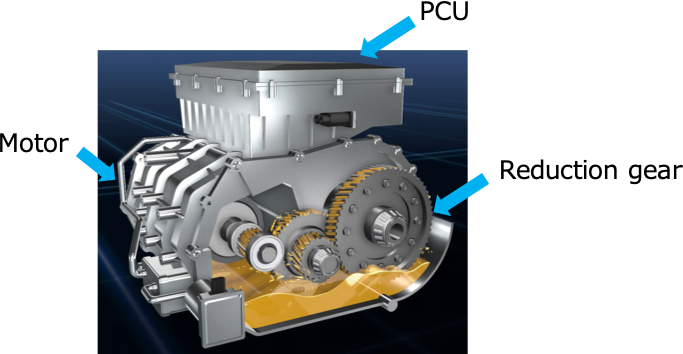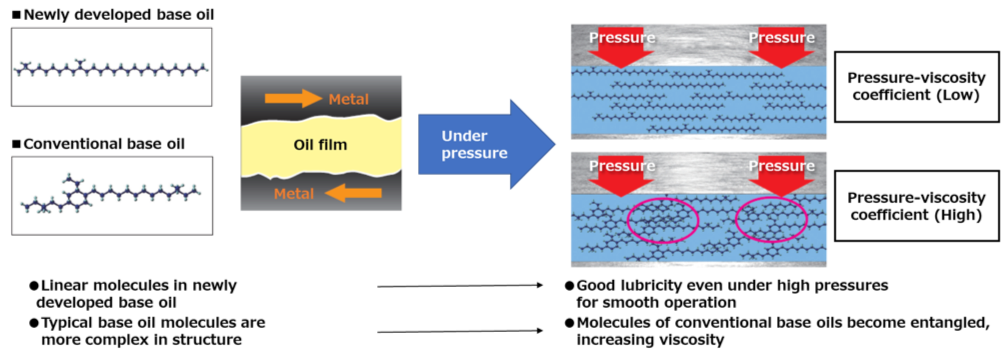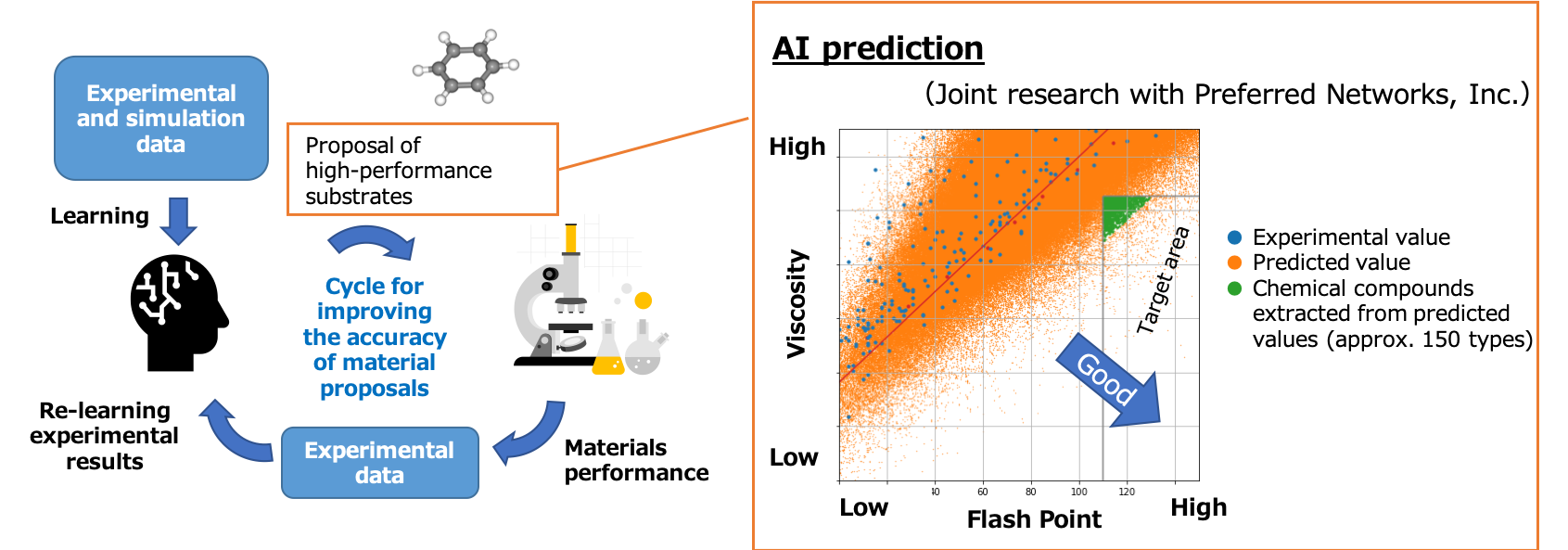Fluids for Electric vehicles (EVs)

EV drivetrain lubricants
EVs use an electric motor to drive. To preserve efficiency and torque these vehicles come equipped with a reduction gearbox. The assembly is called an e-Axle. (Fig. 1).
EV drivetrain lubricants used in a reduction gear box cool the motor, in addition to lubrication and protection of gears and bearings.
We have developed a specialty line of EV drivetrain lubricants, “ENEOS EV FLUID Series”, based on the knowledge accumulated through our development of diverse lubricants. The products demonstrate excellent performance under various environments and we are expanding the product lineup worldwide.

Raising the efficiency of EV drivetrain oils
For maximum cruising range EVs need to use battery energy efficiently. ENEOS has formulated oils with a small change in viscosity as operating temperatures rise. These oils have a high viscosity index and are effective at contributing to improved energy efficiency by reducing unnecessary resistance in the e-Axle. (Fig. 2).
ENEOS has chemically synthesized base oil that not only achieves extremely high viscosity index, but also provides molecular structure to enable smooth lubrication, especially under high-pressure conditions. The state-of-the-art oil significantly contributes to improving energy efficiency in EVs (Fig. 3).


Battery cooling oils
Batteries suffer from reduced output and shortened lifespan when subjected to high temperature conditions. Therefore appropriate temperature control through external cooling is required. Air cooling and water indirect cooling are widely applied at present, however, directly cooling the battery by immersion under oil is being studied for the next-generation EVs with high-output batteries.
ENEOS battery cooling oil provides not only excellent cooling performance but is also designed with safety in mind using high electrical insulation properties and high flash point.
To further improve cooling performance, we are rapidly developing new materials by applying Materials Informatics (MI), an Artificial Intelligence (AI) prediction method. (Fig. 4).
